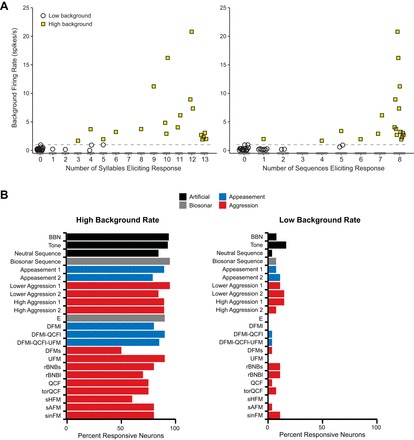Fig. 5.

Background discharge is related to auditory responsiveness. A: background firing rate for high- and low-background neurons plotted against the number of syllables (left) and sequences (right) that evoked a response from each neuron. Horizontal dashed line indicates 1 spike/s cutoff for low-background neurons. Although some high-background neurons were highly selective, most responded to multiple stimuli (mean = 11/13 syllables and 7/8 sequences). Neurons with low background rates respond to very few stimuli. B, left: high-background neurons (n = 21) responded to most acoustic stimuli. Social vocalizations were named according to acoustic structure (Gadziola et al. 2012a). Right: low-background neurons (n = 22) responded selectively but represented the range of acoustic stimuli tested.
